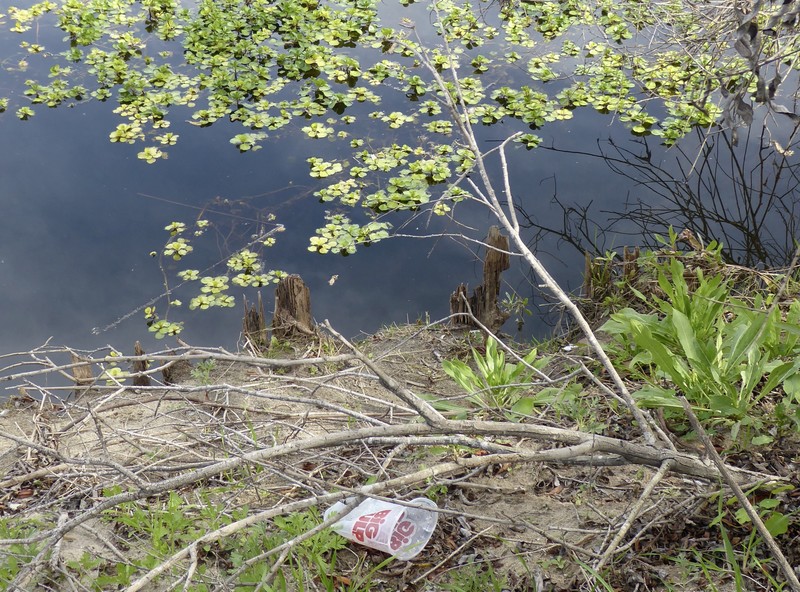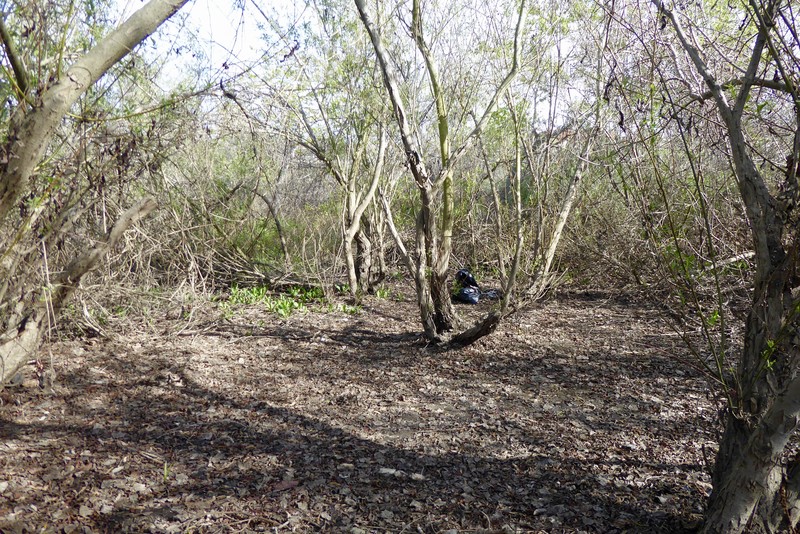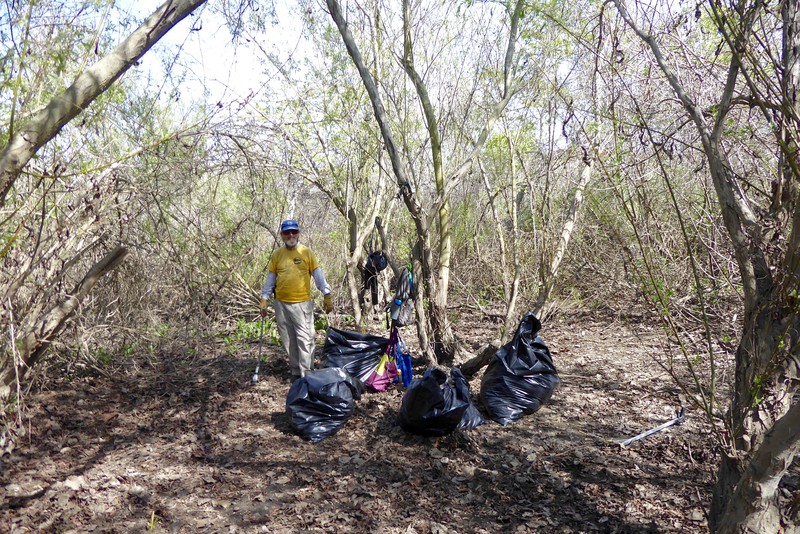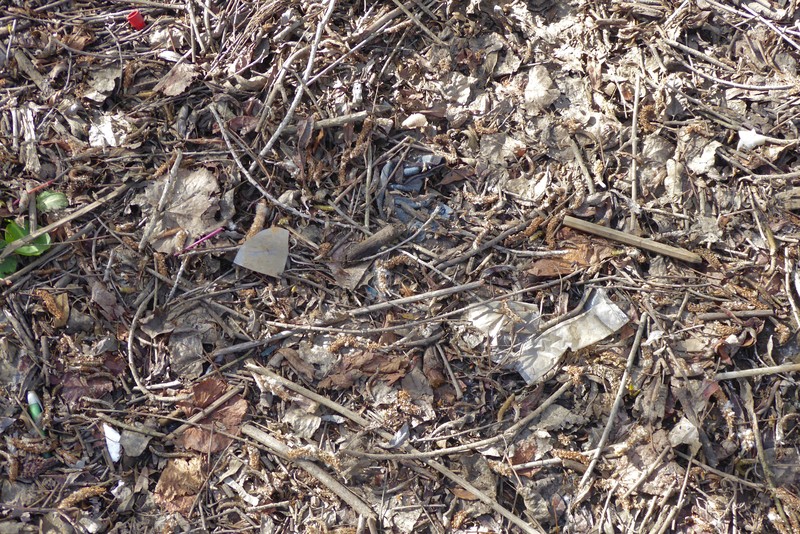This document belongs to the Series:
Rescuing the San Diego River
Rescuing the San Diego River: After the Rain
Document created 22 March 2018, last updated 27 March 2018

Most days, removing trash from the river means clearing abandoned homeless encampments. Some sites, representing whole communities, appear like transitory citadels in dusty clearings in the brush. Others are like independent forts protected by the razor-sharp fronds of Canary Island Date Palms. When we arrive, the sites are mostly vacant: deserted camps with collapsed tents full of discarded belongings and extensive trash piles.
Last week's river rescue had another quality, however. With recent rain flooding the stream bed, much of the trash had been moved around and buried. I stepped into one damp clearing littered with leaves and saw no garbage at first. This was my before photo:

This was my after photo, representing about half of the trash we removed from the site:

With help from two other crew members, I gathered about eight large bags worth of rubbish from the seemingly-trashless soil. I didn’t see it at first because it was camouflaged and buried. Bits of clothing, pens and pencils, q-tips and broken sunglasses had encrusted themselves into the earth and under the leaves.
The work felt archaeological. We delicately exhumed the decomposing materials, trying to avoid fragmenting them further. The more I moved the soil the more I found. There were duffel bags, cycling gloves and gardening gloves, as well as hats and sleeping bags. Plastic waste was omnipresent: plastic forks, disposable cups, soda bottles, take-out containers, hand sanitizer, an empty deodorant, straws and grocery bags. With the soft ripping sound of tiny roots tearing, I lifted a long electronic cable from the top layer of soil and followed it across the clearing like a cartoon character following a fuse. Nearby, a small, curved section of zipper lay exposed on the ground, resembling a toothy jawbone. I tugged at it, walking backwards against the weight of the soil, and unearthed a sweatshirt.

The discoveries I contemplated the most this time were objects that I could imagine people having once deeply valued: a computer, a remote-controlled vehicle, a journal. We acquire belongings with what we think is joy and anticipation, sometimes working hard to save up for them. We use them, usually, and whether or not they really do make us happy, one day they cease to be useful or interesting, and we let them go. For most of us, that’s when they cease to exist. But these inorganic objects don’t dematerialize. Down in the riverbed, I see commodities in their polluted afterworld, clogging rare pieces of inner-city nature. Witnessing the damage that they cause in death, I picture the beginning of their life cycles, and I’m reminded of the war we wage on Earth and on people to make them. Plastic is petrol, and electronics are full of rare minerals that had to be mined in ways that ransack nature and fuel conflict. After all that effort, this is where they end up, casting doubt over whether the services they bring really balance the strife they impose.
Comments
No comment available for this document
Ratings
Not yet rated
Rate it
×




